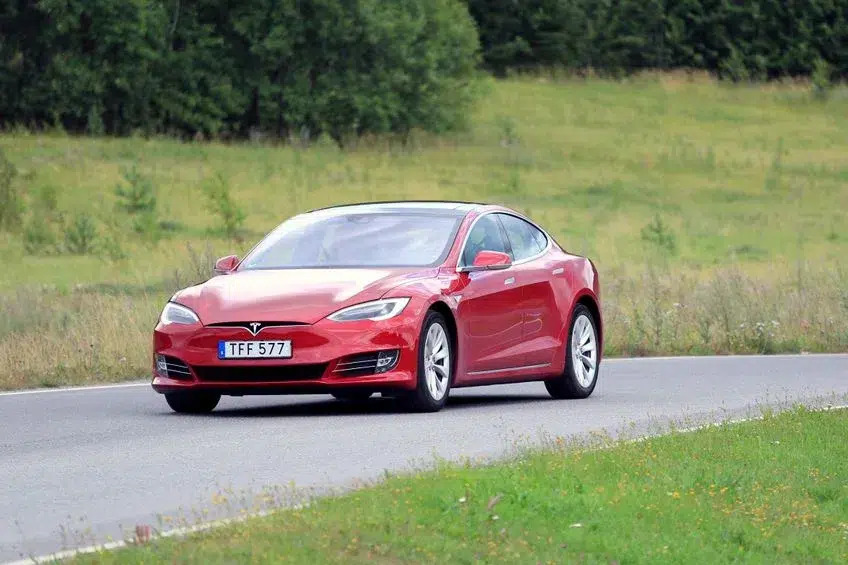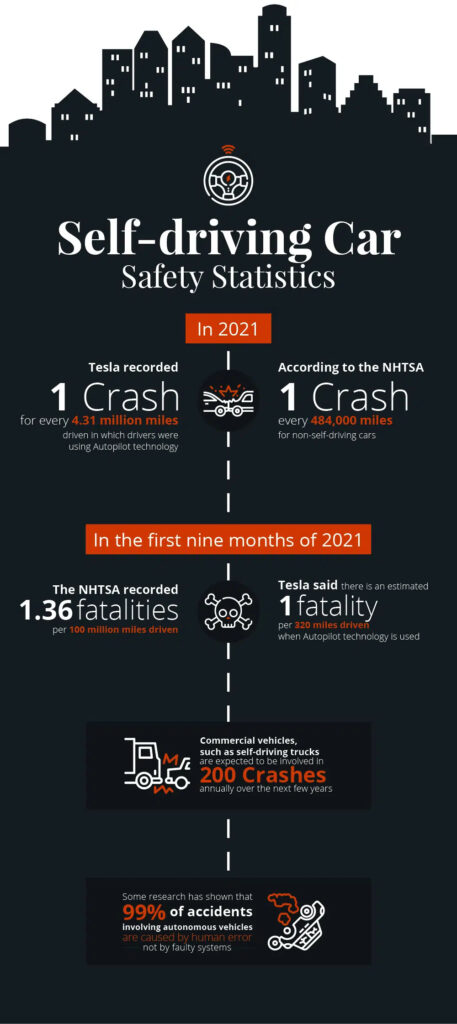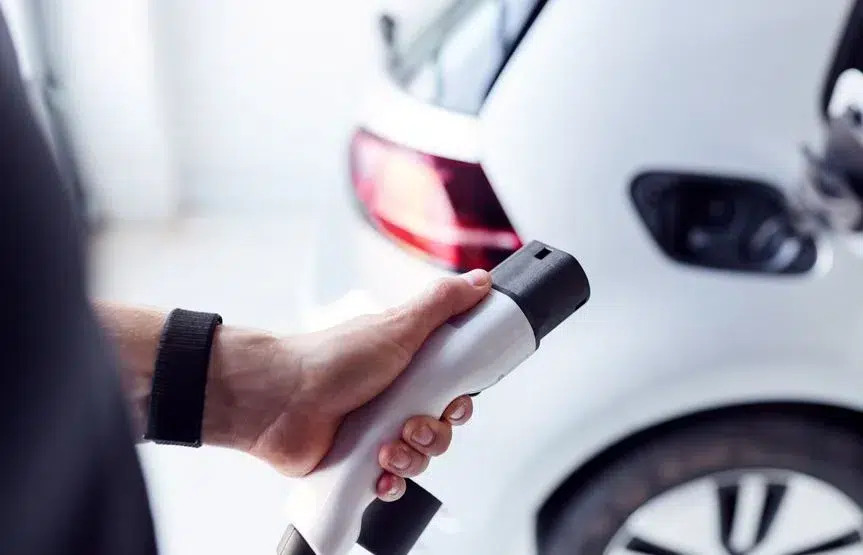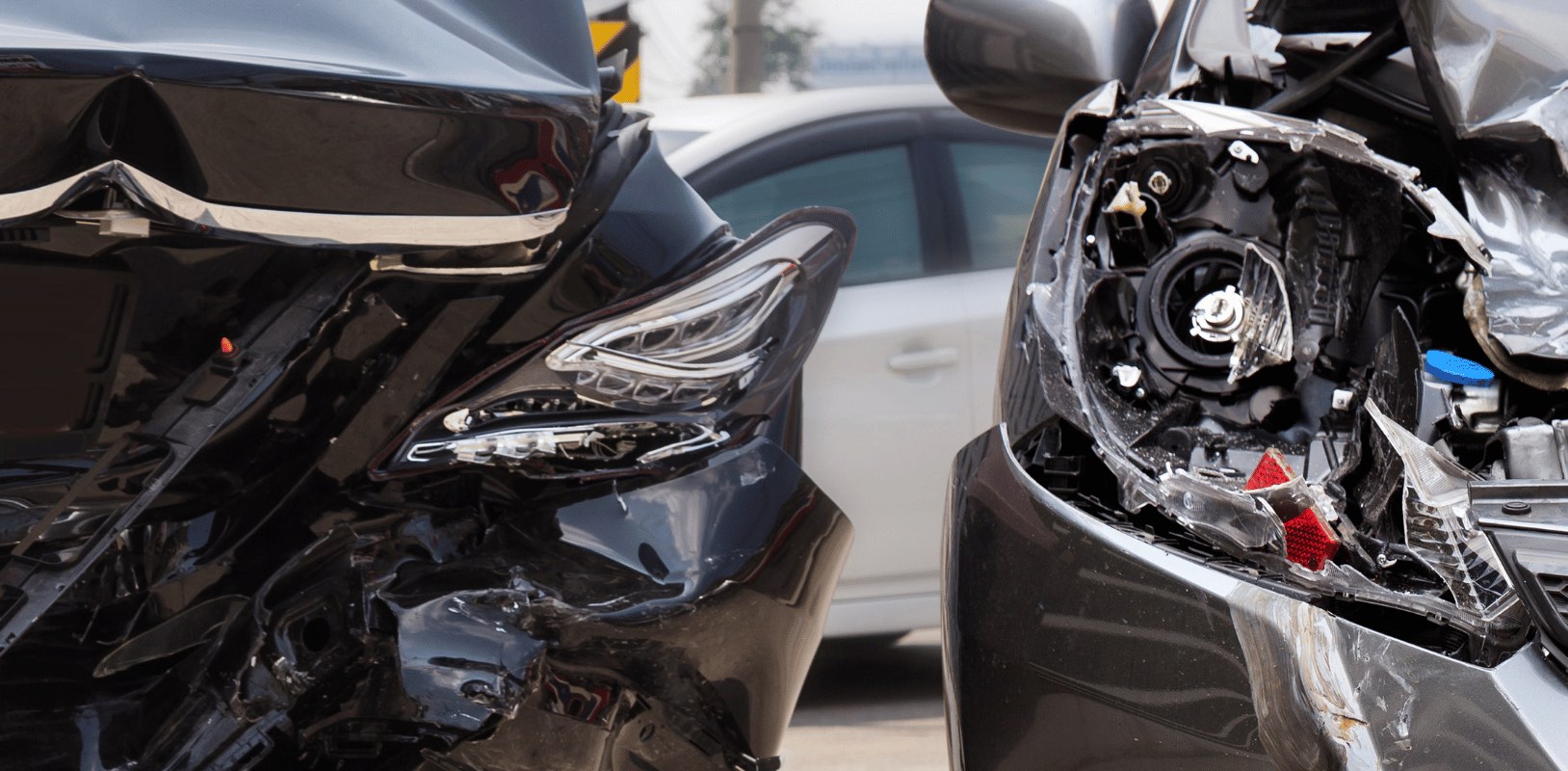Self-driving cars have emerged in the past few years as a major development in vehicular technology. They have received mixed anticipation and support. In one 2021 survey, only 22% of respondents said they felt car manufacturers should focus on designing vehicles with self-driving capabilities. However, 80% of respondents agreed that manufacturers should focus on vehicle safety systems such as lane-keeping assistance and automatic emergency braking.
Generally, people are open to sophisticated vehicle technology if it enhances their driving experience. The question is, do self-driving cars provide enough upsides to overcome the hesitation that many feel toward the technology? Below are some of the pros and cons of self-driving vehicles, the difference between autopilot vs. full self-driving, the current U.S. laws on self-driving cars, and more.
What Are Self-Driving Vehicles? Autopilot vs. Full Self-Driving
Self-driving technology is intended to ease the task of driving and reduce human error by sensing and responding to critical elements of the environment, such as lane lines and other traffic. The Society of Automotive Engineers has developed a six-level classification to quantify the level of automation in cars from Level 0 to Level 5. Anything above a Level 3 is considered ”automated” to some degree.
According to Tesla, the difference between autopilot vs. full self-driving is that full self-driving capability is more advanced and requires less human intervention.
Autopilot is a suite of driver assistance features including traffic-aware cruise control and autosteer, which assists in steering within a clearly marked lane.
Full self-driving capability requires active driver supervision, but the vehicle is more involved. Full self-driving allows a vehicle to automatically change lanes, park, summon, identify stop signs and traffic lights, and navigate from a highway on-ramp to an off-ramp.
Reduced human involvement is an upside of self-driving vehicles. The downside is that any necessary contribution the driver makes becomes even more essential. This is known as the ”paradox of automation.” The more efficient an automated system is, the more essential the occasional human contribution becomes. Another major downside of self-driving cars is that drivers are more likely to become inattentive or distracted.
Self-Driving Car Companies
Because the industry is relatively new, many companies are aiming to deploy self-driving technology in the coming years. Here are just some of the self-driving car companies developing automated technology:
- Tesla
- Alphabet Inc
- GM Cruise
- Apple
Some major manufacturers such as Kia, Ford, Mercedes, and Audi also plan to release cars with self-driving capabilities.
Self-Driving Car Laws 2022

Before we discuss more upsides and downsides, it’s essential to understand the current laws about self-driving vehicles.
In the event of a car accident involving self-driving technology, current laws state that the driver would likely still be liable, at least for any damage caused by human error, i.e., negligence. Mercedes, which became the first automaker to get international certification to produce Level 3 automated vehicles, recently announced it would take full legal responsibility for accidents that occur while the self-driving system is engaged. However, current laws would still hold the driver responsible unless it can be proved that the accident was caused by the failure of or defect in the manufacturer’s self-driving technology and not due, at least in part, to the driver’s own negligence.
Currently, several states have recently passed, or have pending, legislation addressing self-driving vehicles. In March, the U.S. National Highway Traffic Safety Administration (NHTSA) issued new rules which cleared the way for driverless vehicles that do not include manual controls. Some states have legislation regarding the production and use of autonomous vehicles. For example, California recently passed a law prohibiting certain types of self-driving vehicles if they are not zero-emission. Many states, such as Texas, Washington, and Virginia, have passed legislation legalizing self-driving vehicles so long as a driver is present during operation. Currently, no U.S. state has outright banned self-driving technology or made owning or operating a self-driving car illegal. Laws are likely to change when fully autonomous vehicles without drivers are permitted on public roads.
As of now, no vehicles for sale are fully equipped with self-driving technology. However, many states have permitted a limited number of fully self-driving vehicles to conduct tests and research, which the NHTSA monitors.
To help you stay updated with each state’s legislation, the National Conference of State Legislatures has created a tool to track or research new policies by state.
The Pros and Cons of Self-Driving Vehicles 2022
You might wonder if it’s worth investing in a car with self-driving technology. Safety concerns are at the top of many peoples’ minds as well as the logistics of owning an electric vehicle. Here are some more upsides and downsides of owning a self-driving vehicle.
Self-Driving Car Accident Rate
To monitor the safety of self-driving vehicles, the NHTSA requires certain manufacturers to report crashes involving automated systems. According to reports, the NHTSA expects to receive an average of 3,400 Level 2 autonomous vehicle reports each year and about 200 Level 3-5 autonomous vehicle reports as tests continue. Accidents are only reported if an airbag is deployed, an individual is taken to a hospital, there is a fatality, or a vehicle is damaged and towed.
Several deaths caused by self-driving cars with a human driver have been reported, though the extent to which the driver was not paying attention is unclear. Tesla, which produces Level 2 autonomous vehicles, claims its vehicles are safer than the average car.
Here are a few self-driving car safety statistics to put autonomous vehicle safety into perspective:
- In 2021, Tesla recorded one crash for every 4.31 million miles driven in which drivers were using Autopilot technology. According to the NHTSA, there is an automobile crash every 484,000 miles for non-self-driving cars.
- In the first nine months of 2021, the NHTSA recorded 1.36 fatalities per 100 million miles driven. Tesla said there is an estimated one fatality per 320 miles driven when Autopilot technology is used.
- Commercial vehicles, such as self-driving trucks, are expected to be involved in 200 crashes annually over the next few years.
- Some research has shown that 99% of accidents involving autonomous vehicles are caused by human error, not by faulty systems.

Currently, even autonomous taxis without a driver are required to have a human operator at the ready in case of an emergency. Statistics indicate that the safety features of self-driving cars, when used correctly, can protect drivers and reduce accidents.
Charging Electric Cars

The cost of charging an electric car instead of paying for gas is what attracts many to the idea of buying a new vehicle. Generally, charging is cheaper than paying for gas. Someone who drives 1,000 miles per month could expect to spend anywhere between $34 to $46 to charge at home.
However, the cost of charging depends on the model of your car, whether you charge at home or a public station, how quickly you charge, the mileage your car gets, and the cost of electricity in your state. California has the most charging ports of any U.S. state, though it also has far more electric vehicles than any other state. To find the ratio of electric vehicles to public charging stations in your state, click here.
While costs vary, you can almost always expect electric vehicles to be cheaper to refuel than vehicles that require gasoline.
Mobility
Level 5 autonomous vehicles, while not yet a reality, could provide mobility for those who are unable to drive – including seniors and people with disabilities. The NHTSA also advocates for expanded transportation options for underrepresented communities, which could be improved through automated vehicles.
Environmental Benefits
With increasing concerns about the negative effects of gasoline emissions, electronic self-driving vehicles provide several potential benefits for the environment. Vehicle electrification could reduce air pollutants from transportation, and full vehicle automation could increase the use of carpools and shuttle fleets which would lead to less personal driving and eliminate the need for personalized parking spaces.
SJW Injury Attorneys
If you or someone you know was recently involved in a car accident in Las Vegas, our accident attorneys at SJW Injury Attorneys are here to help. If you believe self-driving technology may have played a role in the crash, we are happy to discuss its impact on your potential claim.
Founded in Las Vegas, SJW represents people who were hurt or injured in car accidents. To learn more, contact us or see our guide about what to do after a car accident in Las Vegas.






